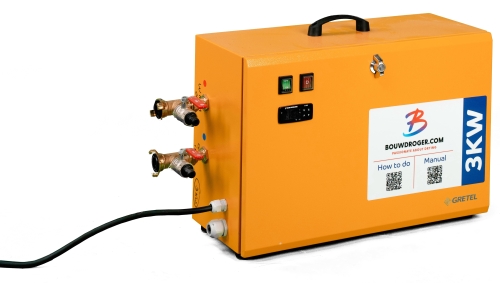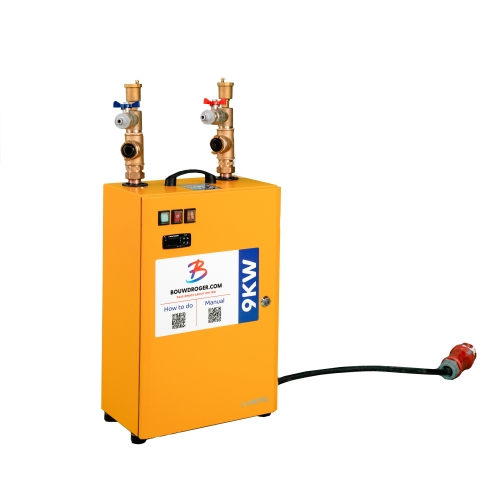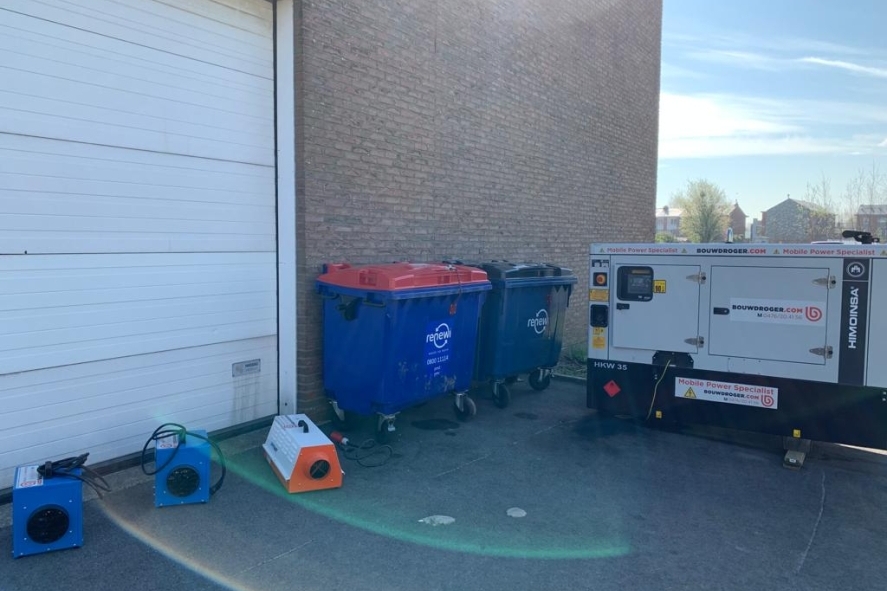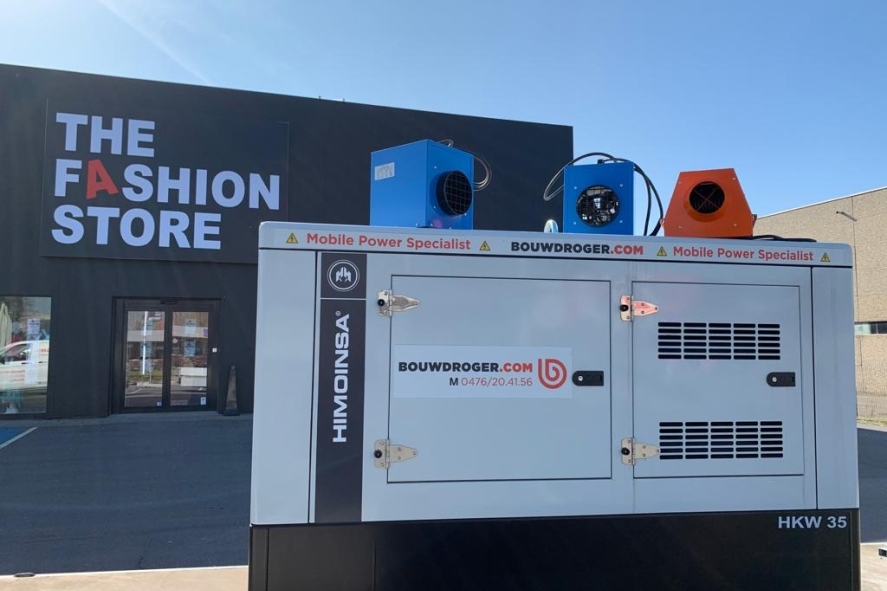A BUILDING DRYER AT LOW TEMPERATURES
It is a myth that building dryers work less efficiently at lower temperatures. What is true is that building dryers thrive, and therefore perform optimally, in warmer environments. The reason for this is that moisture evaporates more quickly at higher temperatures and warm air can generally hold more water vapour. The more water vapour in the air, the more moisture a building dryer can logically extract from the air. However, our building dryers work just as efficiently at low temperatures, for the following reasons.
A building dryer with defrosting thermostat
If the room temperature is on the low side – below 12°C –, the moisture in the air will usually condense less easily in the building dryer whereby it will be harder for a standard building dryer to extract moisture from the room. While it is true that low temperatures are not the most ideal for a building dryer, this does not mean our building dryers work less effectively in cooler environments. Our building dryers are specially equipped with a defrosting thermostat. The condenser block will freeze up and automatically defrost every half hour, thereby enabling our building dryers to ensure highly efficient dehumidification also at low temperatures.
Combining a building dryer with heating
The only potential drawback of installing a building dryer in a room with a lower temperature, is that the drying process will take slightly more time. If you want to speed up the evaporation process, we advise you to combine a building dryer with heating. Warm air can contain much more moisture, so that the building dryer can extract much more water. You could install an electric stove in the vicinity of the building dryer. Where limited power is available, you can opt for an air heater with thermostat running on deodorised petroleum.
Building dryer or adsorption dryer?
We also hire adsorption dryers. This dryer has been specially developed to ensure optimal performance at lower and even extremely low temperatures. This dryer still functions optimally at a temperature as low as minus 15°C. Note, however, this dryer is not a building dryer and is therefore less suitable for use in construction, but ideal for controlling air humidity in refrigeration plants or on shipyards when painting the inner hull, for example. Such an adsorption dryer can also be perfectly used for product drying. Please contact us for details. Do dry this at home!
MOBILE POWER SUPPLY, TEMPORARY HEATING
Our customer was waiting for an increase in the electrical power supply. Since there was temporarily
Read more >















.jpg)
.jpg)
.jpg)
.jpg)
.jpg)
